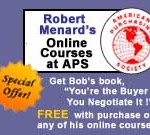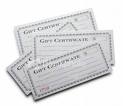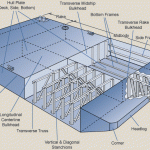
Author, Speaker, Inventor and Consultant, Max Jaffe, CPA, helps individuals keep more of the money they make
Editor’s note: Max Jaffe is a regular guest contributor to this blog.
Isn’t it counter-productive to charge someone a fee if they’ve overdrawn their account? It makes a negative balance “more negative.”
To investigate, I called some banks and asked what happens when a check is written for more than the balance. Assuming you have no account tied to the checking account to cover the check, the bank will cover it for you, which will make your balance negative. Then they will charge you a fee for that service, making your hole deeper. In all fairness, the bank is making your check good, so shouldn’t they be compensated?
Most banks and credit unions offer customers “overdraft protection,” which allows checks as well as ATM withdrawals to overdraw their bank account. The fee for that service ranges from $10 to $38 for each overdraft, according to a study by the FDIC.
Of the banks the FDIC surveyed, 86% had overdraft protection and 75% of those banks automatically enrolled customers in the program. The most common instances where fees were charged were either customers in the age range of 18 to 25 or low-income customers. Per The Wall Street Journal in an article on March 26, 2009, a research and consulting firm, Moebs Services, banks and credit unions earned $36.7 billion in consumer overdraft revenue in 2008, which makes up about 75% of their income.
Many times people don’t keep track of their charges in relation to their reconciled balance. Most people don’t even reconcile their bank account; they simply look up their balance on line. The danger with this practice is that there may be large or small checks that have not cleared the account. So you think you have $1,235.89 in your checking account, only to find that immediately after you checked your balance on line, the check you wrote for $1,174.23 cleared your account, leaving you with a $61.66 balance. So much for that $75.00 item you thought you could buy.
A compromise would be to allow people to opt out of the service, thereby “bouncing” checks when there isn’t ample money in the account. That way they won’t be charged the fee for being overdrawn, as long as the bank doesn’t charge a fee for returning the check. Another problem is when several checks are presented at once; banks will process the largest one first, thereby making each of all the small checks incur overdraft fees, thereby accruing more income to the bank. If all the small checks were able to clear, and they are presented first, then the bank would only be able to earn one overdraft fee, the one for the large check when presented at the end of the stream, makes the account overdrawn.
Try this: ask your bank if your account has overdraft protection. If it does, then make sure your account is reconciled, and then you’ll know if a check will overdraft your account. If you don’t reconcile your account, it’s something you might want to try; after all, it allows you to see where you stand. I suggest you create an intimate relationship with your bank account; when it’s reconciled regularly, it will let you know where you stand. If you don’t follow my advice on reconciling your account, or suppose you’re simply not good at it (not everyone is,) then I suggest if you have overdraft protection on your account, first ask your bank what the procedure is if you write a hot check with no overdraft protection, and if there are no charges, you then ask your bank to remove the protection.







 Recommendation #1–
Recommendation #1–




 rful and more in control. Clean out your closet, garage, attic or storage unit and give what you don’t need to others. Visit the elderly, help a scout, volunteer at a shelter, repair a house, clean up a park, read to school children, become a mentor…. You know what needs to be done or you know the person who does know. Give your time and attention where it is needed. The ability to give shows you just how much you have.
rful and more in control. Clean out your closet, garage, attic or storage unit and give what you don’t need to others. Visit the elderly, help a scout, volunteer at a shelter, repair a house, clean up a park, read to school children, become a mentor…. You know what needs to be done or you know the person who does know. Give your time and attention where it is needed. The ability to give shows you just how much you have.